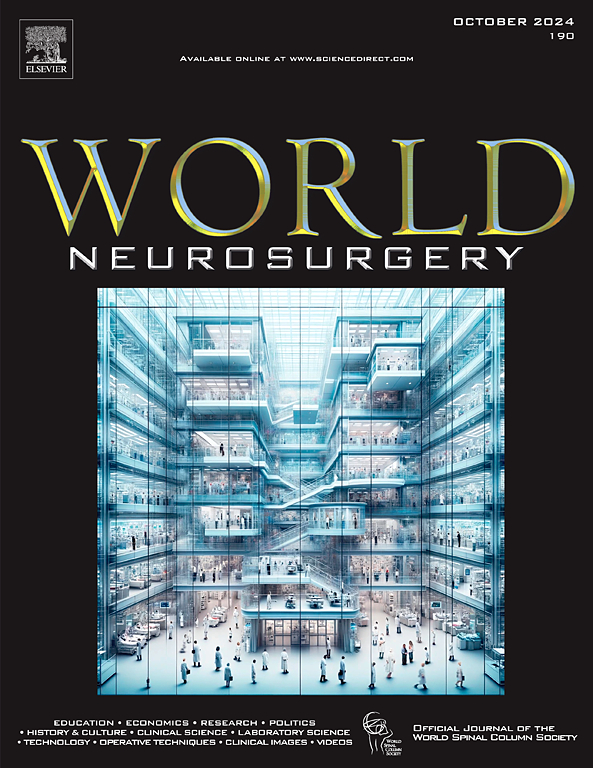Endovascular Therapy for Progressive Stroke due to Intracranial Atherosclerotic Large Vessel Occlusion Beyond the 24-Hour Time Window: A Single-Center Retrospective Cohort Study
IF 1.9
4区 医学
Q3 CLINICAL NEUROLOGY
引用次数: 0
Abstract
Background
The optimal management for treating progressive strokes caused by anterior circulation intracranial atherosclerotic large vessel occlusion (ICAS-LVO) remains unclear.
Methods
A retrospective analysis was conducted on our stroke database. Among the patients presenting with mild ischemic stroke (National Institutes of Health Stroke Scale ≤5), 273 were diagnosed with anterior circulation ICAS-LVO. Forty-five patients who experienced neurologic deterioration (National Institutes of Health Stroke Scale increase ≥4) between 24 hours to 7 days poststroke, despite a persistent ischemic penumbra on computed tomography perfusion, were retrospectively identified. These patients were allocated to either the endovascular-therapy group or the medical-therapy group based on their receipt of endovascular intervention. The modified Rankin scale score at 90 days, the rate of technically successful recanalization, and perioperative complications were assessed.
Results
Of the 45 patients, 27 underwent endovascular therapy, and 18 received medical therapy. Recanalization was technically successful in all cases within the endovascular group. The preferred treatment was direct angioplasty, with 12 patients receiving balloon angioplasty alone, 11 receiving balloon angioplasty and stent implantation, and 4 undergoing balloon angioplasty followed by mechanical thrombectomy. The rate of functional independence (modified Rankin scale ≤2) at 90 days was significantly higher in the endovascular group (74.1%) compared to the medical group (33.3%, risk ratio 5.714; 95% confidence interval, 1.55 to 21.06; P = 0.007). The incidence of intracranial hemorrhage was slightly higher in the endovascular group, but not statistically significant.
Conclusions
Endovascular therapy may offer a viable treatment option for progressive stroke resulting from anterior circulation ICAS-LVO, even when the time from stroke onset to treatment exceeds 24 hours, in select patients.
求助全文
约1分钟内获得全文
求助全文
来源期刊

World neurosurgery
CLINICAL NEUROLOGY-SURGERY
CiteScore
3.90
自引率
15.00%
发文量
1765
审稿时长
47 days
期刊介绍:
World Neurosurgery has an open access mirror journal World Neurosurgery: X, sharing the same aims and scope, editorial team, submission system and rigorous peer review.
The journal''s mission is to:
-To provide a first-class international forum and a 2-way conduit for dialogue that is relevant to neurosurgeons and providers who care for neurosurgery patients. The categories of the exchanged information include clinical and basic science, as well as global information that provide social, political, educational, economic, cultural or societal insights and knowledge that are of significance and relevance to worldwide neurosurgery patient care.
-To act as a primary intellectual catalyst for the stimulation of creativity, the creation of new knowledge, and the enhancement of quality neurosurgical care worldwide.
-To provide a forum for communication that enriches the lives of all neurosurgeons and their colleagues; and, in so doing, enriches the lives of their patients.
Topics to be addressed in World Neurosurgery include: EDUCATION, ECONOMICS, RESEARCH, POLITICS, HISTORY, CULTURE, CLINICAL SCIENCE, LABORATORY SCIENCE, TECHNOLOGY, OPERATIVE TECHNIQUES, CLINICAL IMAGES, VIDEOS
 求助内容:
求助内容: 应助结果提醒方式:
应助结果提醒方式:


